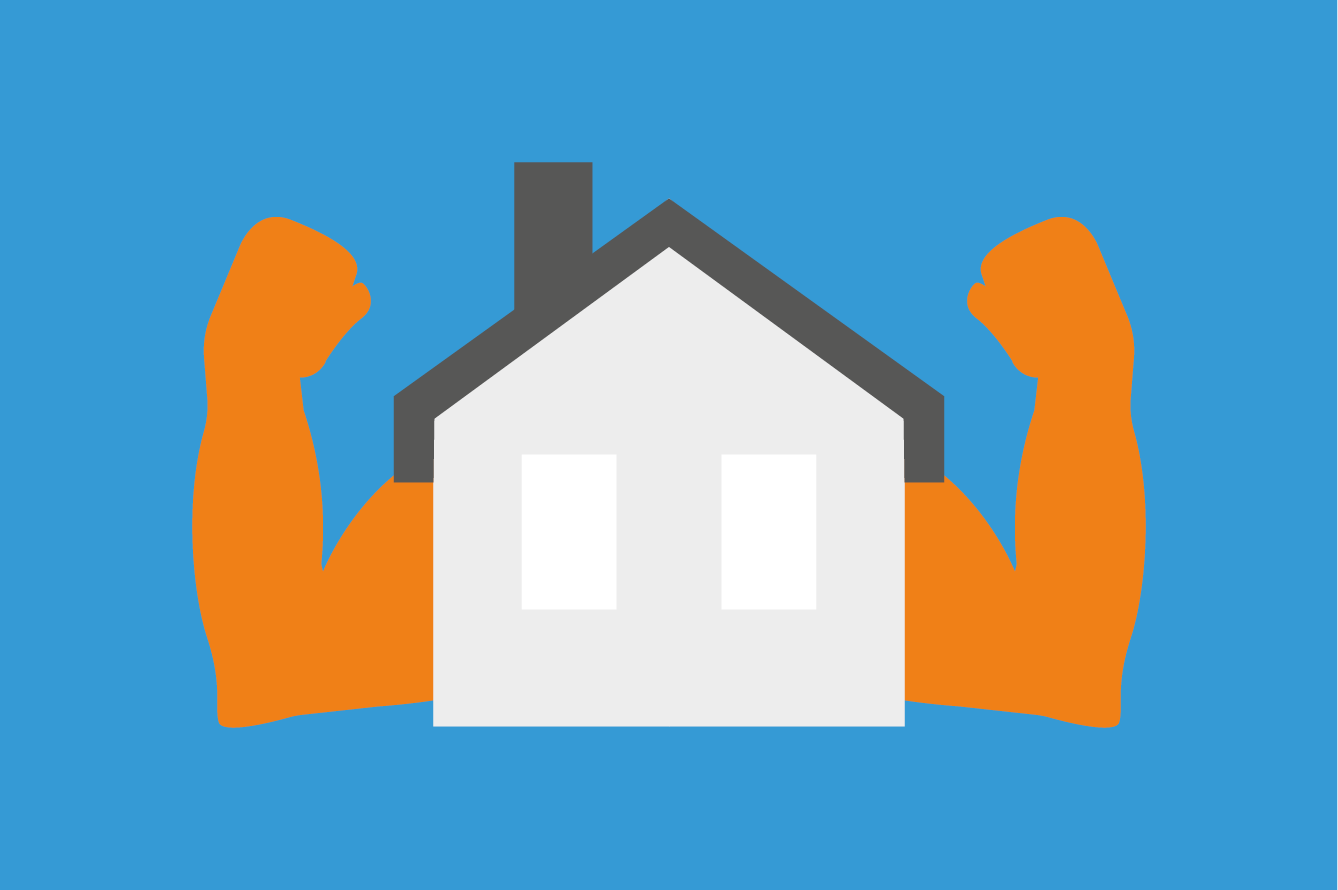A blackout – a power failure of long duration
While a normal power outage is usually limited to one flat, house or neighbourhood, a blackout has a bigger impact.
A blackout is a major disruption that affects a large area and lasts a long time, during which the supra-regional transmission grid collapses. This means that it is not just the last few metres from the transformer to your home that are affected, but also high-voltage electricity cables and other grid infrastructure. The effects can be far-reaching, but are notoriously difficult to predict. Several regions or even several states may be affected.
Such a scenario happens without warning and can have far-reaching consequences. This makes it all the more important to prepare for a possible blackout.
How do I know it’s a blackout?
- There is no electricity in my surroundings/the entire neighbourhood
- Mobile phone and/or landline networks are not working
- A blackout is reported on the radio
When is it not a blackout?
- The power cut is restricted to my flat, house or neighbourhood
- Means of communication (telephone, internet) are working
- I can receive all radio stations; nothing special is being reported
The causes a blackout can have
A blackout can have various causes: technical faults or human error, accidents or sabotage.
Our electricity grid can also be described as the largest machine in the world. Billions of devices consume electricity that is transported over many kilometres. The larger a system is, the more prone it is to faults.
Exactly as much electricity must always be produced as is currently being consumed. If the difference between generation and consumption is too great, the grid can collapse. Our grid is therefore monitored around the clock and generators are automatically switched on or taken off grid as required.
Our network operators prepare for problems and have emergency plans at the ready. Nevertheless, the possibility of a major breakdown and ultimately a blackout can never be ruled out.
The effects can vary depending on the region and duration.
What effects can a blackout have?
How can I prepare for a blackout?
You can prepare in the same way as you would for any other crisis scenario:
- Make sure you have an adequate supply of food and water for at least 10-14 days.
- Find out what precautions have been taken in your municipality (e.g. regarding water supply, contact points in the event of a crisis).
- Have a battery or crank radio ready.
- Make sure you have a sufficient supply of light sources in your household (we recommend LED lights rather than candles – no risk of fire).
- Make sure you have a means of cooking without electricity (e.g. gas hob, emergency hob with fuel paste, barbecue, etc.).
- Consider whether you need to make provisions for emergency power (e.g. agricultural business).
- Discuss your plans with your household, family and neighbours.
In addition:
- Discuss at your work whether you will be needed or can stay at home in the event of a blackout.
You will find further information on our topic page “Crisis-proof household”
What should I do during a blackout?
First steps
- Keep calm!
- Check whether it is only your house/neighbourhood that is affected. If you can see lighting anywhere, it is probably not a blackout.
- Do not call emergency numbers unless you have a real emergency with threat to life or health.
- Switch on your battery, crank or car radio and wait for announcements.
- Inform your family members (preferably in person; if you have mobile phone reception, avoid calls and use text messages instead).
In the household
- Switch off or unplug all devices that were in operation when the blackout occurred. This makes it easier to restore the network. Leave one lamp switched on so that you recognise the end of the situation. Alternatively: Disconnect your house or flat completely from the mains.
- Check your water supplies and top them up if necessary.
- Have torches and other light sources to hand, as well as an emergency cooking facility.
- Remove any potential tripping hazards in your home.
- Check your stock of medication. Check how long the necessary medication will last and how it needs to be stored.
- Stay at home unless you are needed (infrastructure, emergency organisations).
- Keep an eye on freezers and watch out for any leaking liquids. Open all cooling appliances as little as possible.
- Use up perishable food.
- Avoid waste. Collect any waste in bags.
- Set up a replacement toilet if the water supply or waste water systems are not working. Use emergency toilet bags, for example. Check the backflow flaps if you have a private sewage lifting station.
- Animals may need special care Check the heating and oxygen supply to your aquarium, for example.
In the community
- Avoid unnecessary car journeys and use fuel carefully.
- Check the lift in your building – if there is one – to make sure no one is trapped in it
- Stay in contact with your neighbours and consider next steps to be taken together, based on the recommendations of the authorities.
- Check whether there are people in your neighbourhood who need help (e.g. people in need of care or sick people who can no longer be reached by a care service or meals-on-wheels)
A blackout can last several days or be over after just a few hours.
What should I do after a blackout?
Measures to be taken after a blackout
- Check whether appliances that were recently on are switched off (cooker, iron, hair dryer, etc.)
- Only switch on devices that you absolutely need.
- Check the functionality of important devices.
- Continue to avoid non-important calls.
- Stay at home unless otherwise necessary.
- Continue to be careful with your resources.
- Help out in your neighbourhood if necessary.


